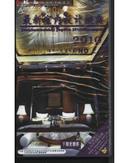
THE CAVALRY & ARMOR JOURNAL 2014年10-12月 骑兵部队和装甲军事杂志
¥ 48 九品
仅1件
河北保定
认证卖家担保交易快速发货售后保障
ISSN2157-8065
责任人/主编U.S. Army Armor Center
出版单位U.S. Army Armor Center
语言英文
开本16开
上书时间2021-11-06
- 在售商品 暂无
- 平均发货时间 9小时
- 好评率 暂无
- 店主推荐
- 最新上架
商品详情
- 品相描述:九品
-
一、1。本店所有图书杂志报纸均为实拍图片,您可点击放大看实际品相。基本都在8-9品以上,多少都有运输过的磨损;个别图书杂志品相不好,如您要品相请您看好咨询后慎拍。特价图书杂志都是淘来的,对品相苛刻者请您绕行,以免发生不愉快。
二、本店因利薄不接受议价。敬请谅解。快递费按各地实际发生费用计算。
三、人不以高矮胖瘦拿薪水,书本也不是以薄厚论价值。您懂得------
四、请您先验货后签收。现在快递都在飞件,如果有任何不满意就请您不要签收。一旦签收即视为满意,不再接受退换货。
五、敬请各位收到货后百忙之中抽时间给个评价,以资鼓励和提高本店服务质量。在此谢过啦! 因本店工作中的失误给您造成误解和不便请您及时沟通 17731266792 在此首先向您道歉!祝您购物愉快!
- 商品描述
-
Categories Armored warfare
Frequency Quarterly ISSN 2157-8605
Publisher U.S. Army Armor Center
Year founded 1888
Country USA
Based in Fort Benning, Georgia
Language English
The Cavalry & Armor Journal
The U.S. Cavalry and Armor Association has been publishing the Cavalry and Journal for 125 years. In March of 1888, the U.S. Cavalry Association began publication of The Journal of the U.S. Cavalry Association at Fort Leavenworth, Kansas. This journal has recorded the step-by-step change in warfare by horse to warfare by machine. Today, the journal continues as the Cavalry & Armor Journal.
With the formation of the U.S. Cavalry Association in 1885 (now the U.S. Cavalry & Armor Association), article Ten of the Constitution laid the groundwork for a journal. The Association had as its mission the professional improvement and the advancement of the cavalry service. To achieve this mission, members read and discussed papers on a variety of subjects at meetings. The printed record of those papers and discussions formed the basis for the first Cavalry journal.
Volume One, Number One came off the steam press of Kecheson and Reeves at Leavenworth, Kansas, in March 1888. It was received with generous press comment from many sources, including, among others, The Epoch, The Nation, Army and Navy Journal, The Guardsman, and England's Journal of the Royal Service Institute.
The first issue of the Cavalry Journal carried a diversity of contents. Several of the subjects were of a highly controversial nature and were not resolved until many years later. The items embraced some German Ideas on Cavalry, Remounts, The New FA Gun, The Use of Arms Mounted, Sabers or Revolvers, The Kelton Devices, Marching Cavalry, MountedFire Action of Cavalry, Dismounted Service of Cavalry and, finally the French Cavalry.
In the latter pages of that first issue there appeared the Constitution and By-Laws of the Association backed by a roster of Officers of the Association and a list of members. To round out the magazine the closing pages contained a selection of military works available to members through the Association.
Early issues of the new publication were the work of a Committee on Publication and Correspondence composed of three officers. There was no Editor, as such. No schedule of publication was planned. Rather, the Journal was to be published when sufficient material had been gathered to build one issue. However, one year after the start of the publication a quarterly basis was established. This was to change periodically, for various reasons, through the years to come.
There were several difficult periods in the Journal's life. Perhaps the greatest pinch came when all officers connected with the publication were called to the front during the war with Spain. In this period only one issue was published for the years 1898 and 1899 respectively. From 1899 the lapse extended to 1902, during which period the continuation of the Journal was in great doubt. However, through the efforts of General Merritt, President of the Association, and other Association members, resumption of the publication in July 1902.
The cover of the Journal during its first several years of publication was quite plain, containing the table of contents sided by a simple sketch of guidon, bugle and saber. at the turn of the century this gave way to a somewhat stiff drawing of a mounted cavalryman. Following the difficult Spanish War period, the Journal was to undergo a real face lifting through the kindness of artist Frederic Remington, a life member of the Association.
In 1898 Remington had gone to the camp of the Third Cavalry at Tampa, Florida a friend, Captain F.H. Hardie, then commanding Troop G of the Third. While there he saw and was struck with the appearance of one of Captain Hardie's men, Sergeant Jack Lannen. Visualizing him as a perfect type of American Cavalryman, Remington made several photos inspired a finished drawing which was presented to the Cavalry Journal in 1902. In January of 1903 this sketch appeared on the cover of the Journal, where it was to remain until 1942.
In 1942, he was replaced with a photograph. This first photo was a late training shot of the Philippine Scouts. The forerunner of things to come was the Fall of '42 shot showing a view from inside a General Grant tank of armor in action on the Libyan Desert. The Association continued to use photographs on the cover until 1989. In1989 Jody Harmon's artwork would grace the cover of ARMOR and the Cavalry and Armor Journal.
World War II brought with it the final transition from horse to mechanization, and the Cavalry Journal kept pace. Articles and pictures depicted armored action. Cavalrymen underwent the transition to mechanization and armor. A traditional arm evolved a new method to acquit a traditional mission. In July of 1946 the Cavalry Association held a special Executive Session in the Editorial Office of the Journal. Resolved, that the Cavalry Association shall become the Armored Cavalry Association, and the Journal shall become The Armored Cavalry Journal.
— 没有更多了 —




























以下为对购买帮助不大的评价